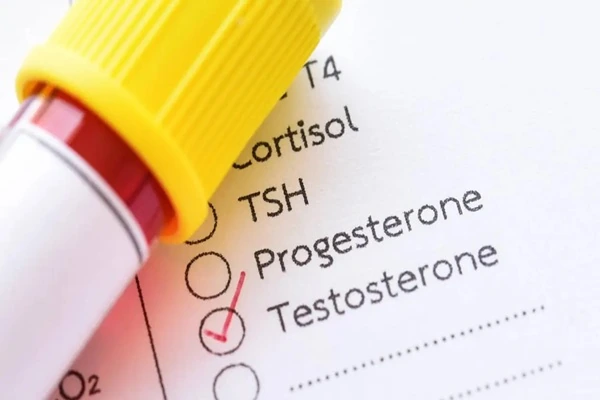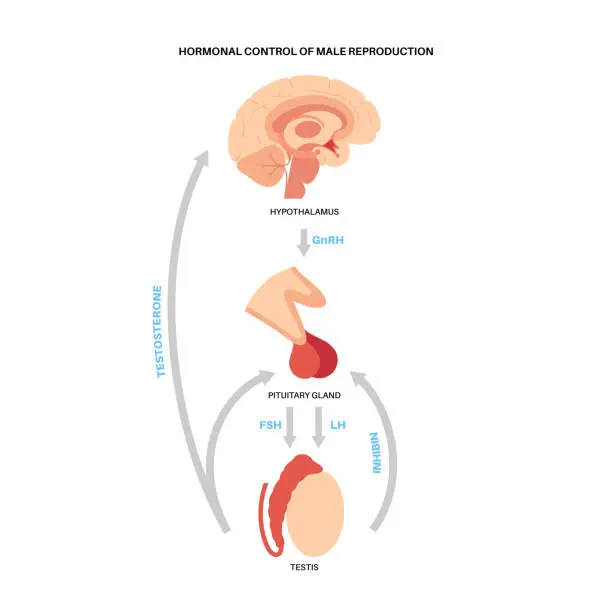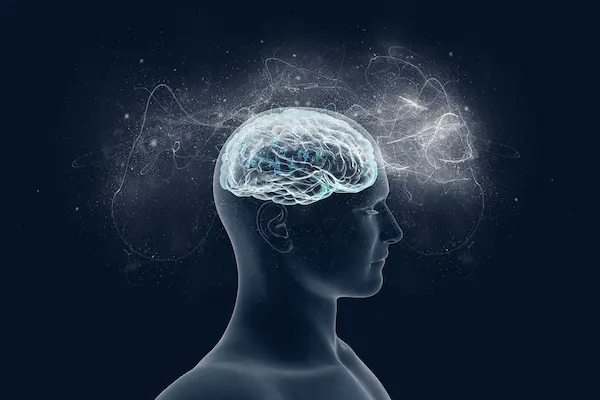
PROMO!
First order? Get 10% OFF with this code: 1storder
Written by

Kisspeptin hormone has gained interest in research because it stimulates the hypothalamic-pituitary-gonadal (HPG) axis.
When Kisspeptin binds to KISS1R receptors on GnRH neurons, it activates gonadotropin-releasing hormone pulses. These pulses then signal the pituitary to release luteinizing hormone (LH).
In research this sequence has been shown to increase LH pulse frequency and lead to higher testosterone levels. Kisspeptin remains a research Peptide, and Peptide Works makes it available to laboratories worldwide for scientific exploration, not for human use.
Understanding how Kisspeptin affects testosterone requires examining the role of LH in the process, as this hormone acts as the direct messenger between the brain and the testes.
Explore Kisspeptin from Peptide Works, a peptide that stimulates LH and activates Leydig cells to naturally support testosterone.

Luteinizing hormone (LH) is the pituitary signal that tells the testes when to make testosterone. It binds to receptors on Leydig cells, triggering a cascade of biochemical reactions that convert cholesterol into steroid hormones.
Without steady LH pulses, the process slows and testosterone levels decline, showing how critical this hormone is for reproductive balance.
Research on the Kisspeptin hormone often highlights its ability to increase LH activity, making LH the direct driver of testosterone production in studies.
The process of testosterone production, however, depends not only on LH but also on the proper functioning of Leydig cells, which carry out the hormone synthesis.
Leydig cells are found in the testes and act like small factories that make testosterone when they receive luteinizing hormone signals.
Inside these cells, cholesterol is converted into testosterone through several enzyme steps that drive hormone production. If Leydig cells are not working well, testosterone levels drop even when the pituitary sends out strong signals.
Research with the Kisspeptin hormone shows how upstream stimulation ensures Leydig cells receive the right signals to keep testosterone synthesis active.
To fully grasp this synthesis, it is important to understand the enzymes that mediate the conversion of cholesterol into testosterone.
Inside Leydig cells, testosterone begins with cholesterol, which is converted into hormones through several enzyme steps.
CYP11A1 initiates the process by forming pregnenolone, 3β-HSD converts it into intermediates, and 17β-HSD completes the chain by producing testosterone.
Researchers studying the Kisspeptin hormone often explore how its upstream signals support these enzymatic reactions, because Kisspeptin indirectly ensures Leydig cells remain active.
This link helps scientists understand how hormonal triggers and cellular enzymes work together to regulate testosterone production in research models. All of these enzymes rely on a common substrate to start the process.

Cholesterol is the starting material that Leydig cells convert into testosterone, forming the base for all steroid hormone production in males.
When luteinizing hormone activates these cells, enzymes transform cholesterol through several steps until testosterone is produced as the final hormone.
Without enough cholesterol, this entire pathway slows or even stops, leading to reduced testosterone levels in research models.
Scientists examining the Kisspeptin hormone often trace its stimulation effects downstream, showing how it indirectly supports cholesterol-driven testosterone synthesis in Leydig cells.
Understanding the building blocks sets the stage for observing whole-body changes triggered by Kisspeptin hormone.
Research shows the Kisspeptin hormone can raise luteinizing hormone pulses, which then lead to higher testosterone levels in controlled studies.
These changes are often short term because the body adapts, but they confirm Kisspeptin’s role in regulating reproductive signals.
Scientists also compare this pathway with peptides like Sermorelin, which boost growth hormone and IGF-1 but only influence testosterone indirectly.
Understanding these differences is key to appreciating how various peptides support hormonal studies in the laboratory setting.
The Kisspeptin hormone drives testosterone by stimulating GnRH and LH, which directly activate Leydig cells in the testes.
Sermorelin, however, works differently because it increases growth hormone and IGF-1, offering only indirect support for testosterone in research settings.
Scientists often compare both peptides to study how distinct hormone pathways interact with reproductive balance. While Kisspeptin shows a direct testosterone response, Sermorelin remains focused on growth regulation.
Both compounds are supplied by Peptide Works strictly for research purpose not for human use.
| Peptide | Primary Action | Testosterone Effect in Research | Pathway Involved |
|---|---|---|---|
| Kisspeptin | Stimulates GnRH → LH release | Direct increase in testosterone levels | HPG axis |
| Sermorelin | Stimulates GH → IGF-1 release | Indirect influence, not a primary response | GH/IGF-1 axis |
These distinctions pave the way for future investigations into how Kisspeptin can further elucidate testosterone regulation.
Discover Sermorelin from Peptide Works, a peptide that boosts growth hormone and IGF-1, supporting overall hormone balance.
The Kisspeptin hormone will likely remain central in research on testosterone and reproductive health.
Future studies may explore how long-term stimulation affects hormone balance and whether new delivery methods can improve reliability in laboratory models.
Sermorelin may continue to be studied alongside Kisspeptin to compare growth and reproductive pathways. Together, these peptides offer researchers valuable tools for understanding hormone control.
At Peptide Works, we provide trusted peptides worldwide, supporting laboratories as they move hormone science into future directions.
All products discussed are supplied for research purposes only and are not intended for human use.
[1] Jayasena CN, Nijher GM, Comninos AN, Abbara A, et al. The effects of kisspeptin-10 on reproductive hormone release show sexual dimorphism in humans. J Clin Endocrinol Metab. 2011 Dec;96(12):E1963-72.
[2] George JT, Veldhuis JD, Roseweir AK, Newton CL, et al. Kisspeptin-10 is a potent stimulator of LH and increases pulse frequency in men. J Clin Endocrinol Metab. 2011 Aug;96(8):E1228-36.
[3] Sinha DK, Balasubramanian A, Tatem AJ, Rivera-Mirabal J, et al. Beyond the androgen receptor: the role of growth hormone secretagogues in the modern management of body composition in hypogonadal males. Transl Androl Urol. 2020 Mar;9(Suppl 2):S149-S159.
[4] Abbara A, Narayanaswamy S, Izzi-Engbeaya C, Comninos AN, et al. Hypothalamic Response to Kisspeptin-54 and Pituitary Response to Gonadotropin-Releasing Hormone Are Preserved in Healthy Older Men. Neuroendocrinology. 2018;106(4):401-410.
ALL CONTENT AND PRODUCT INFORMATION AVAILABLE ON THIS WEBSITE IS FOR EDUCATIONAL PURPOSES ONLY.
DISCLAIMER: These products are intended solely as a research chemical only. This classification allows for their use only for research development and laboratory studies. The information available on our Peptide Works website: https://peptide-works.com/ is provided for educational purposes only. These products are not for human or animal use or consumption in any manner. Handling of these products should be limited to suitably qualified professionals. They are not to be classified as a drug, food, cosmetic, or medicinal product and must not be mislabelled or used as such.
Peptide Works
Related Articles

How effective could Orexin Addiction Therapy be?
Have you ever wondered why some people find it so hard to stop addictive habits, even when they truly want

Can NAD Therapy Improve Cognitive Performance?
NAD Therapy is gaining attention in research for its possible role in brain health. NAD+ (nicotinamide adenine dinucleotide) is a

Enhancing Energy with NAD+ Supplements
Energy is the driving force behind focus, movement, and recovery. When cells have less energy to work with, the body